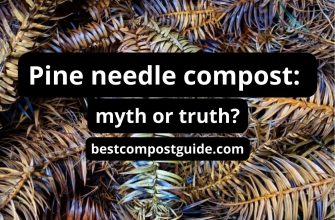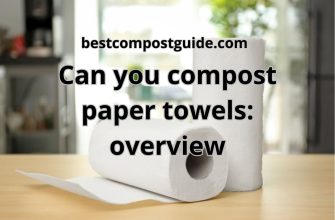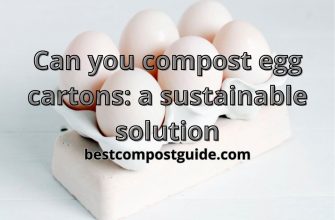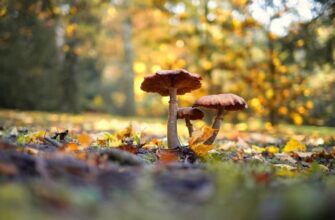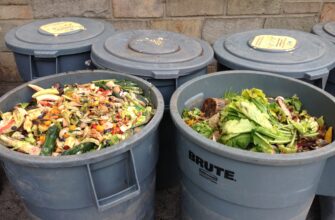Organic fertilizers play a vital role in nourishing existing soil and promoting healthy plant growth.
Worm castings vs. compost are two popular choices among the many options available.
Both are great sources of nutrients and beneficial microbes, but they differ in their composition and specific benefits.
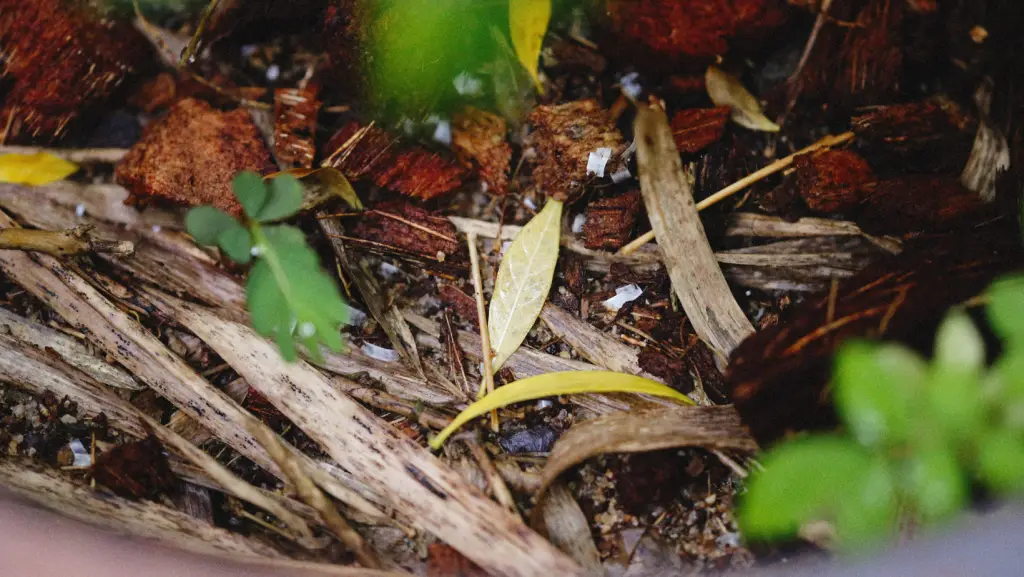
In this article, we will discuss the difference between worm castings vs. compost, and their contribution to the overall health of your plants.
- Worm castings vs. compost
- Earthworm castings
- Compost
- Production process
- Nutrient profile
- Weed seeds
- Benefit assessment
- Techniques
- FAQ
- Are worm castings better than compost?
- What are the disadvantages of worm castings?
- Can you use worm castings and compost together?
- Should I mix worm castings with soil?
- Conclusion
Worm castings vs. compost
Worm castings vs. compost both offer unique benefits and play important roles in organic gardening.
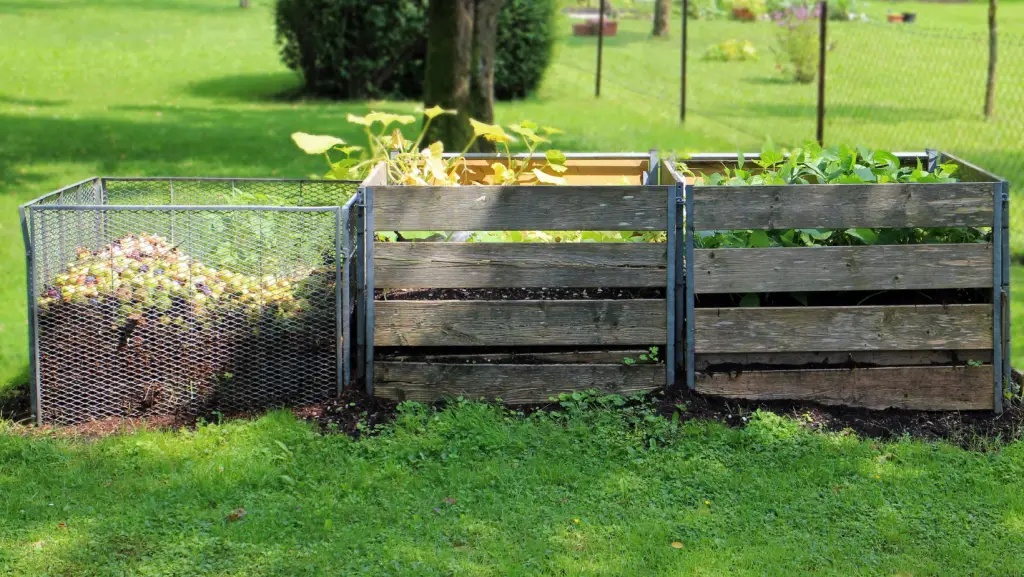
It’s not a matter of one being inherently better than the other, but rather about understanding their distinctions and how they can complement each other.
Earthworm castings
Worm castings, also known as worm manure or worm compost, are the organic material produced by earthworms in a controlled environment, like a worm farm.

Rich in nutrients and beneficial bacteria, worms are a powerful organic fertilizer.
Earthworms consume waste, such as kitchen scraps, vegetable peels, grass clippings, and other organic materials, breaking them down in their digestive tract into nutrient-rich castings.
Compost
On the other hand, compost refers to the decomposed organic materials found in a compost pile.
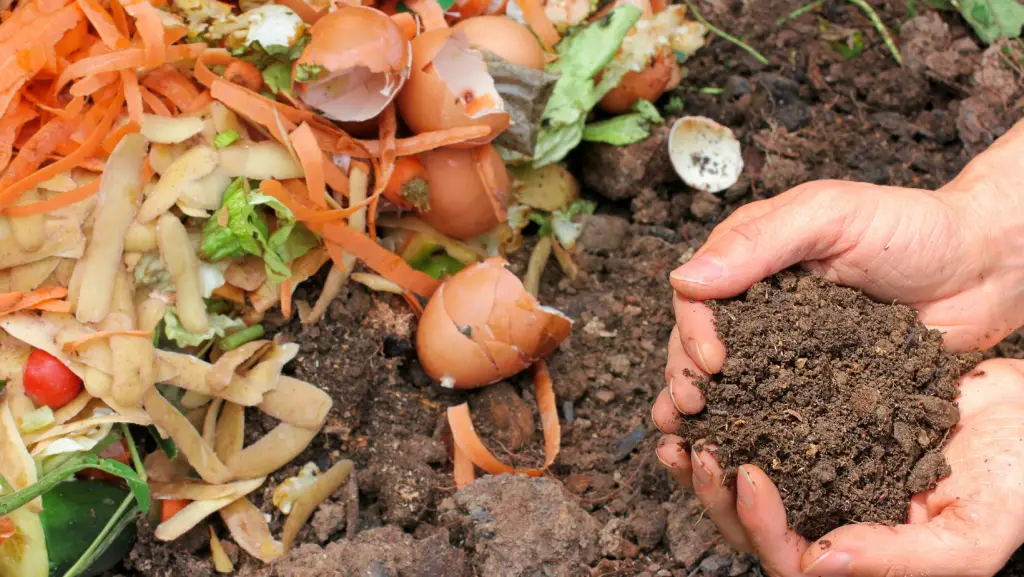
It is produced through the process of composting, where organic matter such as food scraps, fruit and vegetable scraps, grass clippings, and other organic waste, undergo decomposition facilitated by helpful microorganisms.
Compost is often used as a soil amendment to enhance soil structure, water retention, and overall plant well-being.
Production process
One of the key differences between worm castings and composting lies in their production processes.

While compost is created by decomposing organic materials, like food scraps or grass cuttings, in a compost pile, worm castings are the byproduct of earthworms digesting organic matter (worm poop) in a worm farm.
This distinction affects the nutrient composition and microbial content of the two fertilizers.
Nutrient profile
Worm castings contain a high concentration of nutrients, including nitrogen, phosphorus, potassium, calcium, and trace minerals.
These nutrients are present in a form that is easily accessible to plants, promoting vigorous growth and increased resistance to diseases.
Moreover, worm compost is teeming with beneficial bacteria and other microorganisms, which contribute to a healthy soil ecosystem.
Conversely, compost may have a wider range of nutrient levels depending on the materials used in its composition.
It generally contains a more balanced mix of nutrients compared to pure worm castings.
Compost also serves as an excellent source of organic matter, enhancing soil structure, and water retention, and providing a habitat for good microorganisms.
Weed seeds
Another important distinction is the presence of pest plant seeds in regular compost, which is often absent in worm castings.
Since worm farms operate under controlled conditions, the elevated temperatures reached during the composting process are not typically present, reducing the likelihood of weed seed survival.
This can be particularly beneficial for gardeners who wish to minimize weed growth in their soil.
Benefit assessment
Both worm castings and compost offer unique benefits when added to garden soil.
Worm compost excels in providing a concentrated dose of nutrients and good microorganisms, ideal for boosting plant growth and health.
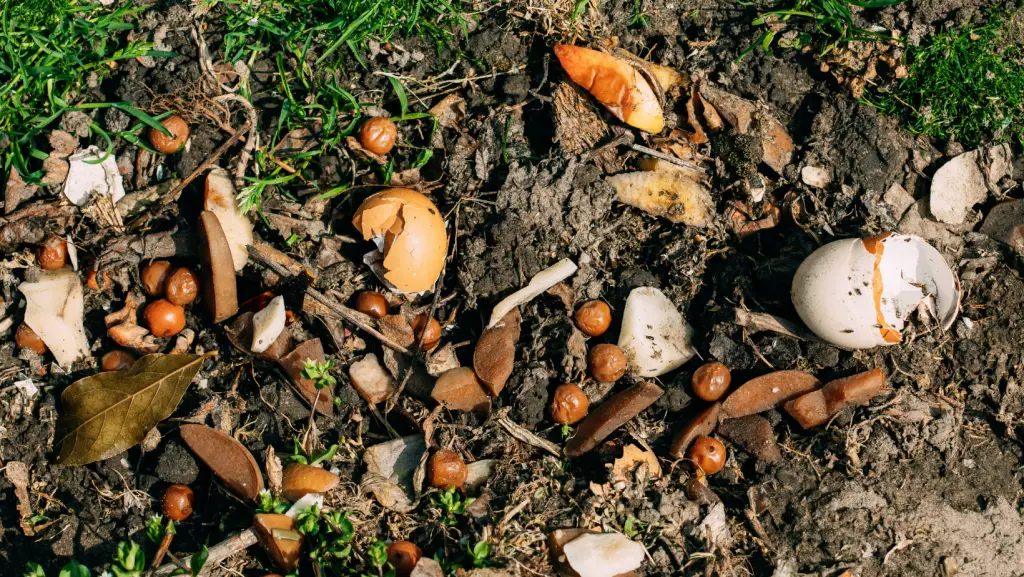
Their use is particularly effective in potted plants or areas with poor soil quality.
On the other hand, compost contributes to overall soil health by improving its structure, water retention, and nutrient availability.
It is an excellent choice for large-scale gardening or when improving the general fertility of the soil mix is desired.
Techniques
To harness the benefits of both compost and worm castings, gardeners often employ various techniques.
One popular method is creating compost tea, in a mixture of finished compost adding worm castings to help extract beneficial microorganisms and nutrients.
This mixture can then be used as a foliar spray or soil drench to promote plant growth and provide disease resistance.
FAQ
Are worm castings better than compost?
The choice depends on your specific gardening needs and soil conditions.
If you’re looking for a concentrated nutrient boost and quick availability, worm castings may be preferred.
However, if you want to enhance soil, improve water holding capacity, and support long-term soil health, compost is a versatile and effective choice.
In many cases, using a combination of worm castings and compost can provide the best results.
By mixing worm castings into compost or incorporating them separately into the soil, you can benefit from the nutrient concentration of worm castings and the soil-enhancing properties of compost.
This synergy allows for optimal nutrient availability, improved soil texture, and a thriving soil ecosystem.
Remember that every garden is unique, and factors such as soil type, plant preferences, and gardening goals should guide your decision.
Regular soil testing can also help determine nutrient deficiencies and guide the application of worm castings or compost to address specific needs.
What are the disadvantages of worm castings?
While worm compost is generally considered a beneficial organic fertilizer, there are a few potential disadvantages to keep in mind:
1. Cost
Worm castings can be more expensive compared to other fertilizers or soil amendments. This is due to the labor-intensive process of vermicomposting in a worm farm, which adds to the production costs.
2. Nutrient variation
The nutrient content of worm castings can vary depending on the feedstock provided to the worms.
If the worms are fed a diet lacking certain nutrients, the resulting castings may also be deficient in those nutrients. It’s important to ensure that the worms receive a diverse range of organic materials.
3. Slow-release
While the slow-release nature of nutrients is beneficial for long-term plant health, it may not provide immediate results for plants with acute nutrient deficiencies.
4. Limited quantity
Worm compost is typically produced in smaller quantities compared to regular compost. This can be a limitation when requiring large amounts of organic matter to amend extensive garden beds or large-scale agricultural areas.
5. Potential odor issues
If not managed properly, worm bins or worm farms can produce unpleasant odors. Adequate ventilation and proper moisture control are essential to minimize any potential odor problems.
6. pH considerations
Worm castings tend to have a neutral pH, which is generally favorable for most plants. If your plants require more acidic conditions, additional amendments may be needed to adjust the pH accordingly.
While these disadvantages should be taken into account, they are not necessarily significant drawbacks for most gardeners.
With proper care and management, the benefits of worm compost mostly outweigh these potential limitations.
Can you use worm castings and compost together?
Absolutely! Both worm castings and compost offer unique benefits, and when combined, they create a synergistic effect that enhances the overall fertility and structure of the soil.
When using worm castings and compost together, you can benefit from the concentrated nutrients and microorganisms present in worm castings, as well as the organic matter and soil conditioning properties of compost.
The combination provides a balanced nutrient profile and a diverse array of beneficial microbes that work together to support the soil ecosystem.
There are a few ways to incorporate worm castings and compost together:
1. Mixing
You can physically combine worm castings and compost together before applying them to the soil. A general guideline is to mix about 10-20% of worm castings with compost by volume.
2. Layering
Start by adding a layer of compost to the soil surface, followed by a layer of worm castings, and repeat the process. This layering method allows for gradual nutrient release and microbial activity throughout the soil profile.
3. Compost tea
Create a compost tea by steeping a mixture of finished compost and worm castings in water. This process allows microorganisms and nutrients to be extracted into the water, creating a liquid fertilizer. It can be applied as a foliar spray or soil drench.
By combining both compost and worm castings, you can maximize the benefits of both soil conditioners.
The worm castings offer a concentrated nutrient source and microbial inoculation, while the compost provides organic matter, improves soil, and supports long-term soil fertility.
Together, they create a balanced and thriving soil ecosystem that benefits plant health and both outdoor and house plants’ productivity.
Remember to adjust the application rates based on the specific needs of your plants and soil conditions.
Regular soil testing can help guide the appropriate quantities and ratios of worm castings and compost for optimal results.
Should I mix worm castings with soil?
Yes, mixing worm castings with soil is a beneficial practice that can improve soil fertility and provide nutrients to your plants.
The nutrient-rich and microbe-packed nature of worm castings makes them an excellent addition to soil.
When mixing worm castings with soil, follow these steps:
1. Prepare the soil: Ensure that the soil is loosened and ready for planting. If the soil is compacted, loosen it with a garden fork or tiller to create a friable texture.
2. Determine the amount: Consider the needs of your plants and the condition of your soil. As a general guideline, you can combine worm castings into the soil at a ratio of 10-20% by volume.This provides a good balance of nutrients and microorganisms without overwhelming the soil.
3. Application: Spread the desired amount of worm castings evenly over the soil surface. Using a garden rake or hoe, work the worm castings into the top few inches of soil.This ensures that the nutrients and microorganisms are incorporated throughout the root zone.
4. Watering: After mixing the worm castings with the soil, water the area thoroughly. This helps settle the soil and allows good microorganisms to establish and spread.
Mixing worm castings with soil enriches the soil with organic matter, nutrients, and beneficial microbes.
The organic matter improves the soil profile, moisture retention, and nutrient-holding capacity.
The nutrients present in worm castings, such as nitrogen, phosphorus, potassium, and trace minerals, provide essential elements for plant growth and development.
Additionally, favorable microorganisms in the worm castings contribute to the overall well-being of the local ecosystem, supporting nutrient cycling and disease suppression.
Whether you’re planting in flower beds, containers, or raised beds, incorporating worm castings to grow plants is a valuable practice.
It’s a natural and sustainable way to improve soil fertility and help plants retain moisture.
Conclusion
In conclusion, both compost and worm castings are valuable replacements for synthetic fertilizers that can significantly enhance the productivity of your plant development.
Worm castings offer a concentrated source of nutrients, while compost improves the soil profile and overall fertility.
By understanding the differences between worm castings and compost, gardeners can make informed decisions about which fertilizer to use based on their specific gardening needs.
Regardless of whether you choose worm castings or compost, both options are sustainable alternatives to chemical fertilizers.
Ultimately, the choice between worm castings and compost depends on your specific gardening goals and soil conditions.


